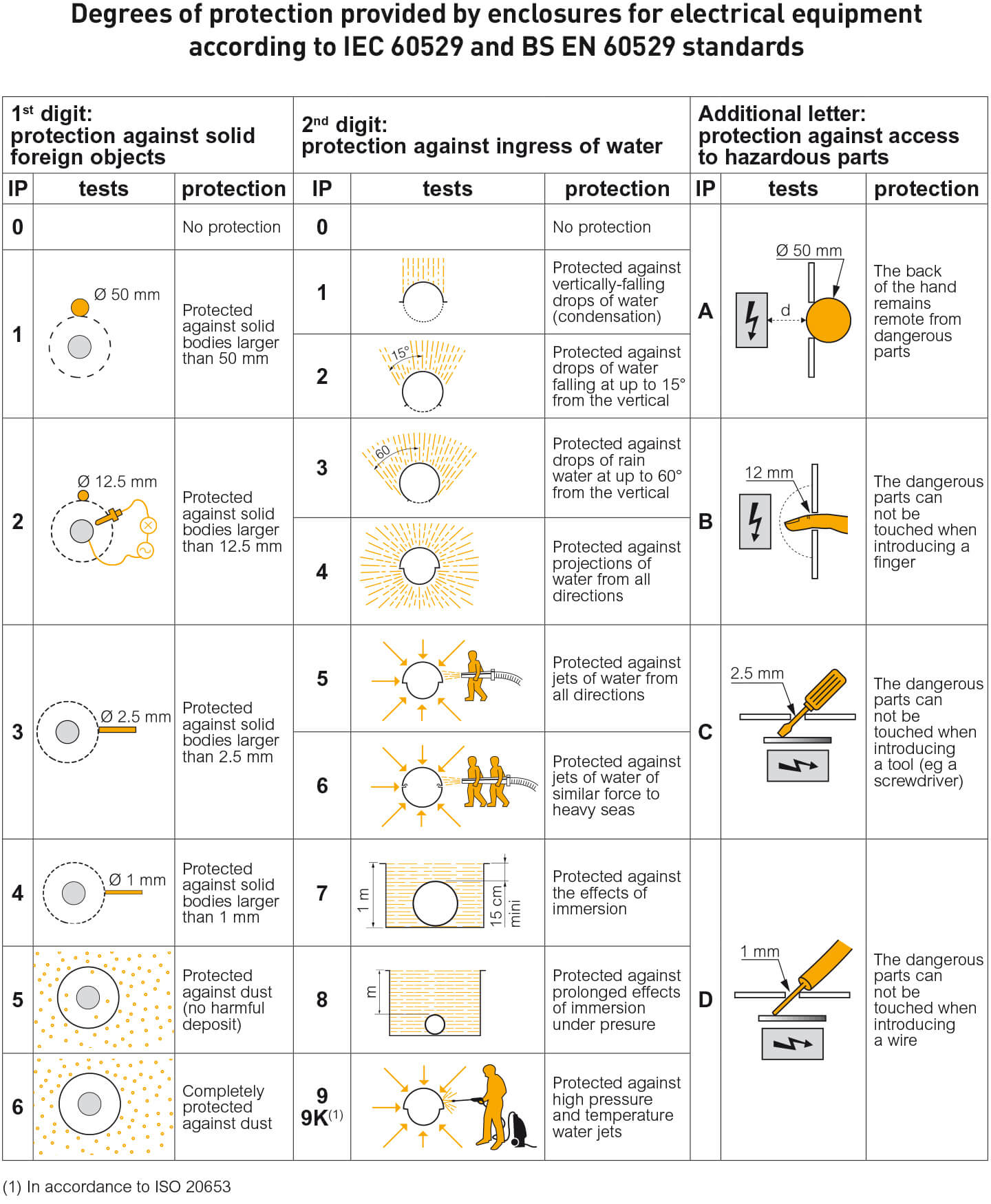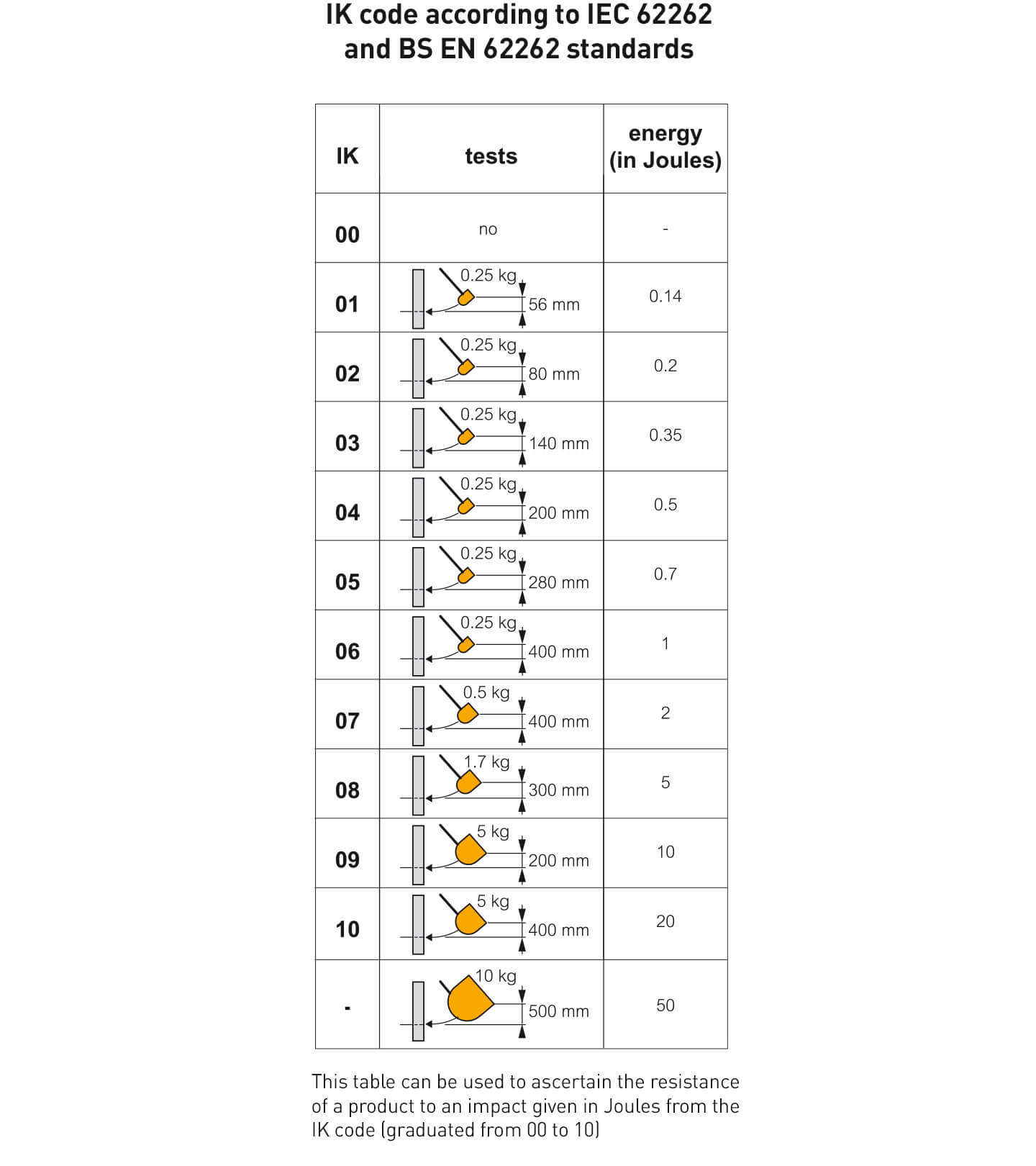What are the IP and IK codes?
A safe electrical installation is an installation with certain levels of protection. This protection is ensured in particular during the design of the installation: earthing, installation of protection devices, etc. But it also involves the choice of electrical equipment adapted to the environment in which it will be used. This is where the IP and IK codes come into play, allowing for the equipment’s resistance to its environment to be assessed.
IP code
The IP rating of an equipment (socket outlet, switch, luminaire, junction box, cabinet, etc.) indicates its degree of protection against the intrusion of solid foreign bodies and liquids inside its enclosure. The IP rating thus makes it possible to determine for which use and environment an electrical device is intended.
The IP rating is composed of 2 digits:
- The first digit indicates the protection of the equipment against the intrusion of solid foreign bodies (fingers, screwdrivers, metal wires, dust...).
- The second digit indicates the protection of the equipment against the intrusion of liquids (mainly water in the form of rain, sprinkling, jet, fire hose... or when the equipment is immersed).
Specific cases
Please note!
Legrand equipment for domestic applications, once installed, has an IP rating equal to or greater than IP 2XC.

IK code
The IK code indicates the degree of protection provided by enclosures for electrical equipment against external mechanical impacts. It consists of two numbers.
